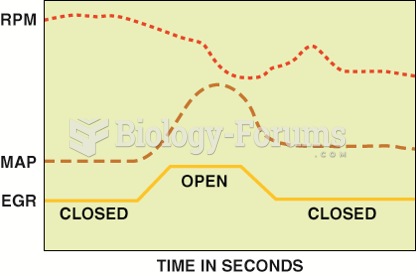Answer to Question 1
Among the tools that are available for providing interactivity on a website are CGI scripts, Active Server Pages and ASP.NET, Java, Java Server Pages, JavaScript, ActiveX, VBScript, Cold Fusion, PHP, Ruby on Rails, and Django, as well as widgets and mashups.
CGI or Common Gateway Interface is a set of standards for communications between a browser and a program running on a server that allows for interaction between the user and the server. CGI allows an executable program to access all of the information within incoming requests from clients. The program then generates the required output for a web page and sends it back to the client through the web server. For example, CGI scripts are behind the display of the contents of a shopping cart to a user. The CGI script retrieves the contents from a database and returns it to the server, which sends it as an HTML page to the user's client computer. All of the computing takes place on the server side, thus this is referred to as server-side computing.
Active Server Pages (ASP) and its successor, ASP.NET, are Microsoft's versions of server-side programming. ASP and ASP.NET enable web developers to easily create and open records from a database and execute programs within an HTML page. They also handle all of the various forms of interactivity found on e-commerce sites.
Java is a programming language that allows programmers to create interactivity on the user's client computer. The leading browsers today have a Java Virtual Machine (VM) that enables Java applets to be downloaded to the client over the Web. Although Java can display interesting graphics and create small interactive programs such as calculators and calendars that are executed entirely on the user's computer, thus saving considerable load on the server, it is not used extensively on corporate e-commerce sites for several reasons. First, the different vendors produce different versions of Java, resulting in applets built using proprietary versions that would only work well in the vendor's own browser or that would crash or malfunction in some browsers. Second, many firms will not allow Java applets through their firewalls for security reasons.
Java Server Pages (JSP), like CGI and ASP, is a web page coding standard. Developers use a combination of HTML, JSP scripts, and Java to dynamically generate web pages. Java servlets (small programs) are specified in the web page and run on the web server to modify pages before they are sent to the user. JSP is supported by most of the popular application servers on the market today.
JavaScript is a programming language invented by Netscape that is used to control objects on HTML pages as well as the interactions with the browser. It is much more acceptable to corporations because it is more stable than Java and it is restricted to the operation of requested web pages. It is used for many common, yet crucial functions such as verifying and validating customer input. For example, it is used to verify that a valid phone number or e-mail address has been entered.
ActiveX is Microsoft's programming language that competes with Java, while VBScript is the competitor for JavaScript. ActiveX controls are the equivalent of Java applets; however, when the browser receives a web page containing an ActiveX control, the browser simply runs the program on the page rather than downloading it to the client's computer. ActiveX also has full access to the client's resources (printers, networks, and hard drives), unlike Java. However, neither ActiveX nor VBScript work in any browser other than Internet Explorer. Due to the proprietary nature of Java, ActiveX, and VBScript, they are generally avoided by e-commerce site developers. CGI scripts, JSP, and JavaScript are the leading tools for providing interactive content.
ColdFusion is an integrated server-side environment for developing interactive web applications. It combines an intuitive tag-based scripting language and a tag-based server scripting language (CFML) that lowers the cost of creating interactive features. It provides visual design, debugging, and deployment tools that make it a complete web application development platform.
PHP is an open source, general purpose scripting language that is most frequently used in server-side web applications to generate dynamic web page content, although it can also be used for client-side graphical user interface applications. PHP is also a part of many web application development frameworks, such as CakePHP, CodeIgniter, and others, and is also part of the LAMP (Linux, Apache, MySQL, PHP) open source web development model for building dynamic websites and web applications (Perl and Python are sometimes substituted for PHP in some LAMP projects).
Ruby on Rails (RoR or Rails) is an open source web application framework based on the Ruby programming language. RoR is based on a philosophy known as convention over configuration, or coding by convention (CoC), which means that the framework provides a structured layout that minimizes the number of decisions that the programmer needs to make, thereby simplifying and speeding development. JavaScript and Ajax are highly integrated into RoR, which makes it easy to handle Ajax requests for page updates. Django is also an open source web application framework. It is based on the Python programming language. Django is optimized for the creation of complex, database-driven websites. It allows for fast development, focuses on automating as much as possible, emphasizes the reusability of various components, and follows the DRY (Don't Repeat Yourself) programming principle.
Widgets are small chunks of code that execute automatically in your HTML web page. They typically present users with dynamic content such as news headlines, calendars, clocks, weather, live TV, games, and other functionality. Mashups pull functionality from one website and include it in another, such as a real-estate agent incorporating Google Maps data in his or her own website
Answer to Question 2
TRUE
 Taking an interesting course can help keep your brain active. These seniors are taking a class in ...
Taking an interesting course can help keep your brain active. These seniors are taking a class in ...
 The tools and equipment needed to perform a compression test include a compression gauge, an air ...
The tools and equipment needed to perform a compression test include a compression gauge, an air ...





